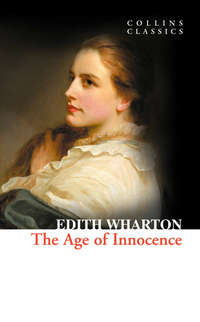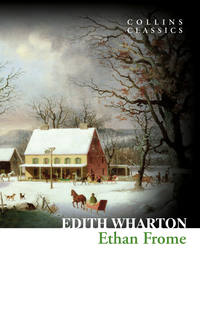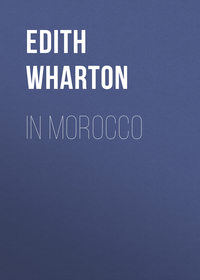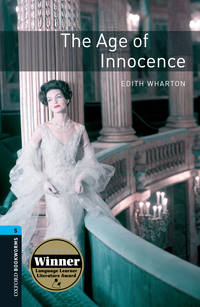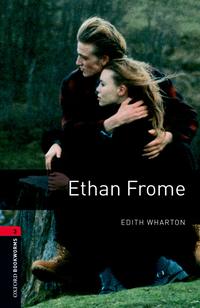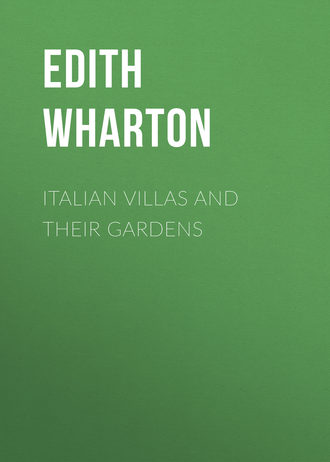 полная версия
полная версияItalian Villas and Their Gardens
As charming in its way, though less romantic and original, is the Marchese Chigi’s other seat of Vicobello, a mile or two beyond the Porta Ovile, on the other side of Siena. Vicobello lies in an open villa-studded country in complete contrast to the wooded hills about Cetinale. The villa is placed on a long narrow ridge of land, falling away abruptly at the back and front. A straight entrance avenue runs parallel to the outer walls of the outbuildings, which form the boundary of the court, the latter being entered through a vaulted porte-cochère. Facing this entrance (as at Cetinale) is a handsome gateway guarded by statues and set in a semicircular wall. Passing through this gate, one descends to a series of terraces planted with straight rows of the square-topped ilexes so characteristic of the Sienese gardens. These densely shaded terraces descend to a level stretch of sward (perhaps an old bowling-green) bordered by a wall of clipped ilexes, at the foot of the hill on which the villa stands.
On entering the forecourt, one faces the villa, a dignified oblong building of simple Renaissance architecture, ascribed in the local guide-book to Baldassare Peruzzi, and certainly of earlier construction than the house at Cetinale. On the left, a gate in a high wall leads to a walled garden, bounded by a long lemon-house which continues the line of the outbuildings on the court. Opposite, a corresponding gateway opens into the bosco which is the indispensable adjunct of the Italian country house. On the other side of the villa are two long terraces, one beneath the other, corresponding in dimensions with the court, and flanked on each hand by walled terrace-gardens, descending on one side from the grove, on the other from the upper garden adjoining the court. The plan, which is as elaborate and minutely divided as that of Cetinale is spacious and simple, shows an equally sure appreciation of natural conditions, and of the distinction between a villa suburbana and a country estate. The walls of the upper garden are espaliered with fruit-trees, and the box-edged flower-plots are probably laid out much as they were in the eighteenth century. All the architectural details are beautiful, especially a well in the court, set in the wall between Ionic columns, and a charming garden-house at the end of the upper garden, in the form of an open archway faced with Doric pilasters, before a semicircular recess with a marble seat. The descending walled gardens, with their different levels, give opportunity for many charming architectural effects—busts in niches, curving steps, and well-placed vases and statues; and the whole treatment of Vicobello is remarkable for the discretion and sureness of taste with which these ornamental touches are added. There is no excess of decoration, no crowding of effects, and the garden-plan is in perfect keeping with the simple stateliness of the house.
About a mile from Vicobello, on an olive-clad hillside near the famous monastery of the Osservanza, lies another villa of much more modest dimensions, with grounds which, though in some respects typically Sienese, are in one way unique in Italy. This is La Palazzina, the estate of the De’ Gori family. The small seventeenth-century house, with its adjoining chapel and outbuildings, lies directly on the public road, and forms the boundary of its own grounds. The charming garden-façade, with its voluted sky-line, and the two-storied open loggia forming the central motive of the elevation, faces on a terrace-like open space, bounded by a wall, and now irregularly planted à l’Anglaise, but doubtless once the site of the old flower-garden. Before the house stands an old well with a beautiful wrought-iron railing, and on the axis of the central loggia a gate opens into one of the pleached ilex-alleys which are the glory of the Palazzina. This ancient tunnel of gnarled and interlocked trees, where a green twilight reigns in the hottest summer noon, extends for several hundred feet along a ridge of ground ending in a sort of circular knoll or platform, surrounded by an impenetrable wall of square-clipped ilexes. The platform has in its centre a round clearing, from which four narrow paths radiate at right angles, one abutting on the pleached walk, the others on the outer ilex-wall. Between these paths are four small circular spaces planted with stunted ilexes and cypresses, which are cut down to the height of shrubs. In these dwarf trees blinded thrushes are tied as decoys to their wild kin, who are shot at from the circular clearing or the side paths. This elaborate plantation is a perfectly preserved specimen of a species of bird-trap once, alas! very common in this part of Italy, and in which one may picture the young gallants of Folgore da San Gimignano’s Sienese sonnets “Of the Months” taking their cruel pleasure on an autumn day.
Another antique alley of pleached ilexes, as densely shaded but not quite as long, runs from the end of the terrace to a small open-air theatre which is the greatest curiosity of the Villa de’ Gori. The pit of this theatre is a semicircular opening, bounded by a low wall or seat, which is backed by a high ilex-hedge. The parterre is laid out in an elaborate broderie of turf and gravel, above which the stage is raised about three feet. The pit and the stage are enclosed in a double hedge of ilex, so that the actors may reach the wings without being seen by the audience; but the stage-setting consists of rows of clipped cypresses, each advancing a few feet beyond the one before it, so that they form a perspective running up to the back of the stage, and terminated by the tall shaft of a single cypress which towers high into the blue in the exact centre of the background. No mere description of its plan can convey the charm of this exquisite little theatre, approached through the mysterious dusk of the long pleached alley, and lying in sunshine and silence under its roof of blue sky, in its walls of unchanging verdure. Imagination must people the stage with the sylvan figures of the Aminta or the Pastor Fido, and must place on the encircling seats a company of nobil donne in pearls and satin, with their cavaliers in the black Spanish habit and falling lace collar which Vandyke has immortalized in his Genoese portraits; and the remembrance of this leafy stage will lend new life to the reading of the Italian pastorals, and throw a brighter sunlight over the woodland comedies of Shakspeare.
III
ROMAN VILLAS
In studying the villas near the smaller Italian towns, it is difficult to learn much of their history. Now and then some information may be gleaned from a local guide-book, but the facts are usually meagre or inaccurate, and the name of the architect, the date of the building, the original plan of the garden, have often alike been forgotten.
With regard to the villas in and about Rome, the case is different. Here the student is overwhelmed by a profusion of documents. Illustrious architects dispute the honour of having built the famous pleasure-houses on the seven hills, and historians of art, from Vasari downward, have recorded their annals. Falda engraved them in the seventeenth century, and Percier and Fontaine at the beginning of the nineteenth; and they have been visited and described, at various periods, by countless travellers from different countries.
One of the earliest Roman gardens of which a description has been preserved is that which Bramante laid out within the Vatican in the last years of the fifteenth century. This terraced garden, with its monumental double flight of steps leading up by three levels to the Giardino della Pigna, was described in 1523 by the Venetian ambassador to Rome, who speaks of its grass parterres and fountains, its hedges of laurel and cypress, its plantations of mulberries and roses. One half of the garden (the court of the Belvedere) had brick-paved walks between rows of orange-trees; in its centre were statues of the Nile and the Tiber above a fountain; while the Apollo, the Laocoon and the Venus of the Vatican were placed about it in niches. This garden was long since sacrificed to the building of the Braccio Nuovo and the Vatican Library; but it is worth mentioning that Burckhardt, whose least word on Italian gardens is more illuminating than the treatises of other writers, thought that Bramante’s terraced stairway first set the example of that architectural magnificence which marks the great Roman gardens of the Renaissance.
Next in date comes the Villa Madama, Raphael’s unfinished masterpiece on the slope of Monte Mario. This splendid pleasure-house, which was begun in 1516 for Cardinal Giuliano de’ Medici, afterward Pope Clement VII, was intended to be the model of the great villa suburbana, and no subsequent building of the sort is comparable to what it would have been had the original plans been carried out. But the villa was built under an evil star. Raphael died before the work was finished, and it was carried on with some alterations by Giulio Romano and Antonio da Sangallo. In 1527 the troops of Cardinal Colonna nearly destroyed it by fire; and, without ever being completed, it passed successively into the possession of the Chapter of St. Eustace, of the Duchess of Parma (whence its name of Madama), and of the King of Naples, who suffered it to fall into complete neglect.
The unfinished building, with its mighty loggia stuccoed by Giovanni da Udine, and the semicircular arcade at the back, is too familiar to need detailed description; and the gardens are so dilapidated that they are of interest only to an eye experienced enough to reconstruct them from their skeleton. They consist of two long terraces, one above the other, cut in the side of the wooded slope overhanging the villa. The upper terrace is on a level with Raphael’s splendid loggia, and seems but a roofless continuation of that airy hall. Against the hillside and at the end it is bounded by a retaining-wall once surmounted by a marble balustrade and set with niches for statuary, while on the other side it looks forth over the Tiber and the Campagna. Below this terrace is another of the same proportions, its retaining-wall broken at each end by a stairway descending from the upper level, and the greater part of its surface taken up by a large rectangular tank, into which water gushes from the niches in the lateral wall. It is evident from the breadth of treatment of these terraces that they are but a fragment of the projected whole. Percier and Fontaine, in their “Maisons de Plaisance de Rome” (1809), published an interesting “reconstitution” of the Villa Madama and its gardens, as they conceived it might have been carried to completion; but their plan is merely the brilliant conjecture of two artists penetrated with the spirit of the Renaissance, for they had no documents to go by. The existing fragment is, however, well worthy of study, for the purity of its architecture and the broad simplicity of its plan are in marked contrast to the complicated design and overcharged details of some of the later Roman gardens.
Third in date among the early Renaissance gardens comes another, of which few traces are left: that of the Vigna del Papa, or Villa di Papa Giulio, just beyond the Porta del Popolo. Here, however, the building itself, and the architectural composition which once united the house and grounds, are fortunately well preserved, and so exceptionally interesting that they deserved a careful description. The Villa di Papa Giulio was built by Pope Julius III, whose pontificate extends from 1550 to 1555. The villa therefore dates from the middle of the sixteenth century; but so many architects were associated with it, and so much confusion exists as to their respective contributions, that it can only be said that the Pope himself, Michelangelo, Vignola, Vasari and Ammanati appear all to have had a hand in the work. The exterior elevation, though it has been criticized, is not as inharmonious as might have been expected, and on the garden side both plan and elevation have a charm and picturesqueness which disarm criticism. Above all, it is felt at once that the arrangement is perfectly suited to a warm climate. The villa forms a semicircle at the back, enclosing a paved court. The ground floor is an open vaulted arcade, adorned with Zucchero’s celebrated frescoes of putti peeping through vine-wreathed trellises; and the sides of the court, beyond this arcade, are bounded by two-storied lateral wings, with blind arcades and niches adorned with statues. Facing the villa, a colonnaded loggia terminates the court; and thence one looks down into the beautiful lower court of the bath, which appears to have been designed by Vasari. From the loggia, steps descend to a semicircular court enclosed in walls, with a balustraded opening in its centre; and this balustrade rests on a row of caryatids which encircle the lowest court and form a screen before the grotto-like bath under the arches of the upper terrace. The plan is too complicated, and the architectural motives are too varied, to admit of clear description: both must be seen to give an idea of the full beauty of the composition. Returning to the upper loggia above the bath, one looks across the latter to a corresponding loggia of three arches on the opposite side, on the axis of which is a gateway leading to the actual gardens—gardens which, alas! no longer exist. It will thus be seen that the flagged court, the two open loggias, and the bath are so many skilfully graduated steps in what Percier and Fontaine call the “artistic progression” linking the gardens to the house, while the whole is so planned that from the central hall of the villa (and in fact from its entrance-door) one may look across the court and down the long vista of columns, into what were once the shady depths of the garden.
In all Italian garden-architecture there is nothing quite comparable for charm and delicately reminiscent classicalism with this grotto-bath of Pope Julius’s villa. Here we find the tradition of the old Roman villa-architecture, as it had been lovingly studied in the letters of Pliny, transposed into Renaissance forms, with the sense of its continued fitness to unchanged conditions of climate and a conscious return to the splendour of the old patrician life. It is instructive to compare this natural reflowering of a national art with the frigid archæological classicalism of Winckelmann and Canova. Here there is no literal transcription of uncomprehended detail: the spirit is preserved, because it is still living, but it finds expression in subtly altered forms. Above all, the artist has drawn his inspiration from Roman art, the true source of modern architecture, and not from that of Greece, which, for all its beauty and far-reaching æsthetic influences, was not the starting-point of modern artistic conceptions, for the plain historical reason that it was utterly forgotten and unknown when the mediæval world began to wake from its lethargy and gather up its scattered heritage of artistic traditions.
When John Evelyn came to Rome in 1644 and alighted “at Monsieur Petit’s in the Piazza Spagnola,” many of the great Roman villas were still in the first freshness of their splendour, and the taste which called them forth had not yet wearied of them. Later travellers, with altered ideas, were not sufficiently interested to examine in detail what already seemed antiquated and out of fashion; but to Evelyn, a passionate lover of architecture and garden-craft, the Italian villas were patterns of excellence, to be carefully studied and minutely described for the benefit of those who sought to imitate them in England. It is doubtful if later generations will ever be diverted by the aquatic “surprises” and mechanical toys in which Evelyn took such simple pleasure; but the real beauties he discerned are once more receiving intelligent recognition after two centuries of contempt and indifference. It is worth noting in this connection that, at the very height of the reaction against Italian gardens, they were lovingly studied and truly understood by two men great enough to rise above the prejudices of their age: the French architects Percier and Fontaine, whose volume contains some of the most suggestive analyses ever written of the purpose and meaning of Renaissance garden-architecture.
Probably one of the least changed among the villas visited by Evelyn is “the house of the Duke of Florence upon the brow of Mons Pincius.” The Villa Medici, on being sold by that family in 1801, had the good fortune to pass into the hands of the French government, and its “facciata incrusted with antique and rare basso-relievos and statues” still looks out over the statued arcade, the terrace “balustraded with white marble” and planted with “perennial greens,” and the “mount planted with cypresses,” which Evelyn so justly admired.
The villa, built in the middle of the sixteenth century by Annibale Lippi, was begun for one cardinal and completed for another. It stands in true Italian fashion against the hillside above the Spanish Steps, its airy upper stories planted on one of the mighty bastion-like basements so characteristic of the Roman villa. A villa above, a fortress below, it shows that, even in the polished cinque-cento, life in the Papal States needed the protection of stout walls and heavily barred windows. The garden-façade, raised a story above the entrance, has all the smiling openness of the Renaissance pleasure-house, and is interesting as being probably the earliest example of the systematic use of fragments of antique sculpture in an architectural elevation. But this façade, with its charming central loggia, is sufficiently well known to make a detailed description superfluous, and it need be studied here only in relation to its surroundings.
Falda’s plan of the grounds, and that of Percier and Fontaine, made over a hundred and fifty years later, show how little succeeding fashions have been allowed to disturb the original design. The gardens are still approached by a long shady alley which ascends from the piazza before the entrance; and they are still divided into a symmetrically planted grove, a flower-garden before the house, and an upper wild-wood with a straight path leading to the “mount planted with cypresses.”
It is safe to say that no one enters the grounds of the Villa Medici without being soothed and charmed by that garden-magic which is the peculiar quality of some of the old Italian pleasances. It is not necessary to be a student of garden-architecture to feel the spell of quiet and serenity which falls on one at the very gateway; but it is worth the student’s while to try to analyze the elements of which the sensation is composed. Perhaps they will be found to resolve themselves into diversity, simplicity and fitness. The plan of the garden is simple, but its different parts are so contrasted as to produce, by the fewest means, a pleasant sense of variety without sacrifice of repose. The ilex-grove into which one first enters is traversed by hedged alleys which lead to rond-points with stone seats and marble Terms. At one point the enclosing wall of ilex is broken to admit a charming open loggia, whence one looks into the depths of green below. Emerging from the straight shady walks, with their effect of uniformity and repose, one comes on the flower-garden before the house, spreading to the sunshine its box-edged parterres adorned with fountains and statues. Here garden and house-front are harmonized by a strong predominance of architectural lines, and by the beautiful lateral loggia, with niches for statues, above which the upper ilex-wood rises. Tall hedges and trees there are none; for from the villa one looks across the garden at the wide sweep of the Campagna and the mountains; indeed, this is probably one of the first of the gardens which Gurlitt defines as “gardens to look out from,” in contradistinction to the earlier sort, the “gardens to look into.” Mounting to the terrace, one comes to the third division of the garden, the wild-wood with its irregular levels, through which a path leads to the mount, with a little temple on its summit. This is a rare feature in Italian grounds: in hilly Italy there was small need of creating the artificial hillocks so much esteemed in the old English gardens. In this case, however, the mount justifies its existence, for it affords a wonderful view over the other side of Rome and the Campagna.
Finally, the general impression of the Medici garden resolves itself into a sense of fitness, of perfect harmony between the material at hand and the use made of it. The architect has used his opportunities to the utmost; but he has adapted nature without distorting it. In some of the great French gardens, at Vaux and Versailles for example, one is conscious, under all the beauty, of the immense effort expended, of the vast upheavals of earth, the forced creating of effects; but it was the great gift of the Italian gardener to see the natural advantages of his incomparable landscape, and to fit them into his scheme with an art which concealed itself.
While Annibale Lippi, an architect known by only two buildings, was laying out the Medici garden, the Palatine Hill was being clothed with monumental terraces by a master to whom the Italian Renaissance owed much of its stateliest architecture. Vignola, who transformed the slopes of the Palatine into the sumptuous Farnese gardens, was the architect of the mighty fortress-villa of Caprarola, and of the garden-portico of Mondragone; and tradition ascribes to him also the incomparable Lante gardens at Bagnaia.
In the Farnese gardens he found full play for his gift of grouping masses and for the scenic sense which enabled him to create such grandiose backgrounds for the magnificence of the great Roman prelates. The Palatine gardens have been gradually sacrificed to the excavations of the Palace of the Cæsars, but their almost theatrical magnificence is shown in the prints of Falda and of Percier and Fontaine. In this prodigal development of terraces, niches, porticoes and ramps, one perceives the outcome of Bramante’s double staircase in the inner gardens of the Vatican, and Burckhardt justly remarks that in the Farnese gardens “the period of unity of composition and effective grouping of masses” finally triumphs over the earlier style.
No villa was ever built on this site, and there is consequently an air of heaviness and over-importance about the stately ascent which leads merely to two domed pavilions; but the composition would have regained its true value had it been crowned by such a palace as the Roman cardinals were beginning to erect for themselves. It is especially interesting to note the contrast in style and plan between this garden and that of the contemporaneous Villa Medici. One was designed for display, the other for privacy, and the success with which the purpose of each is fulfilled shows the originality and independence of their creators. It is a common error to think of the Italian gardens of the Renaissance as repeating endlessly the same architectural effects: their peculiar charm lies chiefly in the versatility with which their designers adapted them to different sites and different requirements.
As an example of this independence of meaningless conventions, let the student turn from the Villa Medici and the Orti Farnesiani to a third type of villa created at the same time—the Casino of Pope Pius IV in the Vatican gardens, built in 1560 by the Neapolitan architect Pirro Ligorio.
This exquisite little garden-house lies in a hollow of the outer Vatican gardens near the Via de’ Fondamenti. A hillside once clothed with a grove rises abruptly behind it, and in this hillside a deep oblong cut has been made and faced with a retaining-wall. In the space thus cleared the villa is built, some ten or fifteen feet away from the wall, so that its ground floor is cool and shaded without being damp. The building, which is long and narrow, runs lengthwise into the cut, its long façades being treated as sides, while it presents a narrow end as its front elevation. The propriety of this plan will be seen when the restricted surroundings are noted. In such a small space a larger structure would have been disproportionate; and Ligorio hit on the only means of giving to a house of considerable size the appearance of a mere garden-pavilion.
Percier and Fontaine say that Ligorio built the Villa Pia “after the manner of the ancient houses, of which he had made a special study.” The influence of the Roman fresco-architecture is in fact visible in this delicious little building, but so freely modified by the personal taste of the architect that it has none of the rigidity of the “reconstitution,” but seems rather the day-dream of an artist who has saturated his mind with the past.





